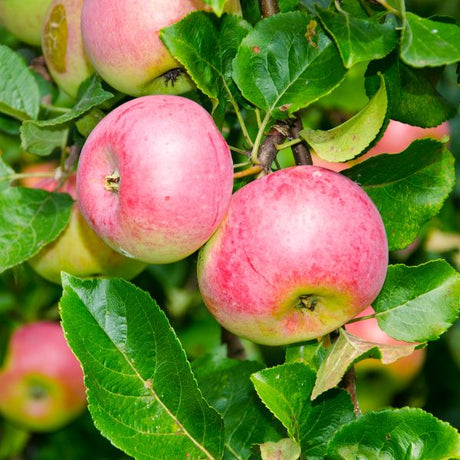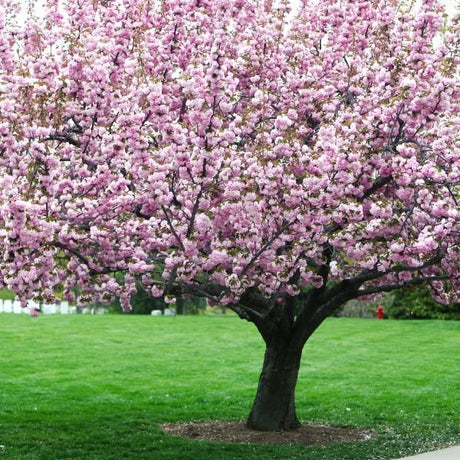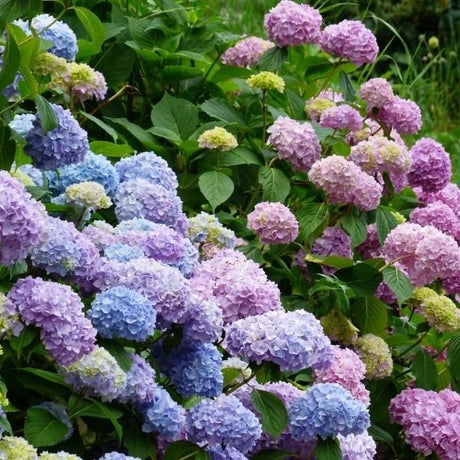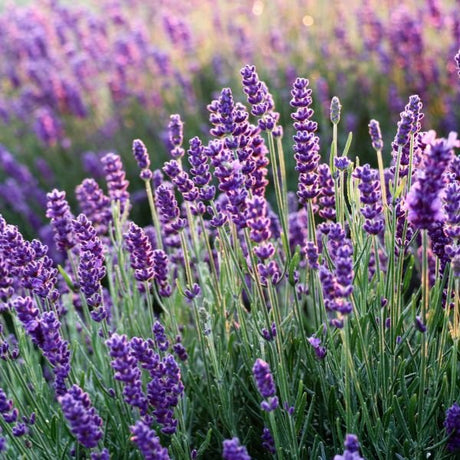Oleander
- Stay Protected with Plant Sentry ™
Oleander - #5 Container is backordered and will ship as soon as it is back in stock.
Plant Sentry™
Plant Sentry™
Plant Sentry is designed to protect both consumers and the nursery trade from invasive plant pests and diseases. Sites that display the Plant Sentry protection badge are protected from consumers buying and nurseries shipping material carrying invasive pests and diseases.
This proprietary eCommerce software prevents the shipment of a restricted plant to each state. The Plant Sentry system includes a shipment certification program. The Plant Sentry Compliance Officer works closely with NatureHills.com and each nursery or fulfillment center to ensure only compliant plants are sold to customers.
Click Here to learn more

Delivery and Shipping
Delivery and Shipping
Shipping
To obtain a more accurate shipment time-frame, simply enter your zip code in the “Find Your Growing Zone” box to the right. Our plants are grown all over the country and lead time on items may be different because of this. Once your order is placed, you will also receive the specific shipment time-frame information as part of your order confirmation. Once an item ships, you will receive shipment notification and tracking numbers, so you can follow along while your plant travels to your doorstep. We use FedEx, UPS, or USPS at our discretion.
Due to winter weather we have put a hold on shipping to the areas shown below in grey. You can still order now and we will ship the plant to you during an appropriate time for your zone.
Standard Shipping Rates
At Nature Hills we handle, package and ship the products you order with the utmost care to ensure healthy delivery. Shipping and handling charges are calculated based on the tables below. Please note that some items include an additional handling surcharge, these will be noted on the item's product page.
| From | To | S&H |
|---|---|---|
| $0 | $19.99 | $24.99 |
| $20 | $49.99 | $29.99 |
| $50 | $69.99 | $34.99 |
| $70 | $99.99 | $39.99 |
| $100 | $129.99 | $44.99 |
| $130 | $149.99 | $48.99 |
| $150 | $150+ | Approx 28% |
Click here to see our full rates
Buying Options for Plants
Nature Hills sells a large variety of plants with several options available. Plants are offered in both potted containers and as dormant bare root without soil. Here is a helpful resource to understand your options as you create a beautiful landscape with help from Nature Hills.
Ever wonder what a larger plant will mean for your landscape? Container Sizes are really all about the age of the plant!
Seasonally, Nature Hills offers hand selected, high quality bare root trees, shrubs and perennials. Bare root plants are sold by height from the top of the root system to the top of the plant. Plants may be taller than the height minimums.
- Popular sizes of select trees are 1 foot, 2 feet, 3 feet, etc.
- Popular sizes of select bare root plants is 1 foot, 18 inches, etc.
Nature Hills Container Size by Volume
Keep in mind, specific varieties and different growing conditions can affect the rate at which plants grow. Variations in size may occur.
| Young Plants to 18 Months | ||
|---|---|---|
| Size | Volume | |
| 2"x2"x3" | Ranges from | .18 to .21 dry quarts / .198 to .23 dry liters in volume |
| 4.5" Container | Equal to | .65 dry quart / .72 dry liter in volume |
| Sprinter Pot | Equal to | .63 dry quart / .69 dry liter in volume |
| 4" Container | Ranges from | .31 to .87 / .35 to .96 dry liter in volume |
| 6" Container | Equal to | 1.4 dry quarts / 1.59 dry liters in volume |
| 1 Quart | Equal to | 1 dry quart / 1.1 dry liter in volume |
| 5.5" Container | Equal to | 1.89 of a dry quart / 2.08 dry liters in volume |
| 4"x4"x5" | Ranges from | .8 to 1.1 dry quarts / .88 to 1.2 dry liters in volume |
| 4"x4"x6" | Ranges from | 1.0 to 1.3 dry quarts / 1.1 to 1.41 dry liters in volume |
| 4"x4"x9" | Ranges from | 1.1 to 2.1 dry quarts / 1.2 to 2.3 dry liters in volume |
| 4"x4"x10" | Ranges from | 1.7 to 2.3 dry quart / 1.87 to 2.53 dry liters in volume |
| Plants 18 Months - 2.5 Years Old | ||
|---|---|---|
| Size | Volume | |
| 2 Quart | Equal to | 2 dry quarts / 2.2 dry liters in volume |
| #1 Container | Ranges from | 2.26 to 3.73 dry quarts / 2.49 to 4.11 dry liters in volume |
| 5"x5"x12" | Equal to | 3.5 to 4.3 dry quarts / 3.85 to 4.74 dry liters in volume |
| Plants 2 - 4 Years Old | ||
|---|---|---|
| Size | Volume | |
| #2 Container | Ranges from | 1.19 to 1.76 dry gallons / 5.24 to 7.75 dry liters in volume |
| #3 Container | Ranges from | 2.32 to 2.76 dry gallons / 10.22 to 12.16 dry liters in volume |
| Plants 3 - 5 Years Old | ||
|---|---|---|
| Size | Volume | |
| #5 Container | Ranges from | 2.92 to 4.62 dry gallons / 12.86 to 20.35 dry liters in volume |
| #6 Container | Ranges from | 5.25 to 6.01 dry gallons / 23.12 to 26.42 dry liters in volume |
| #7 Container | Ranges from | 5.98 to 6.08 dry gallons / 26.34 to 26.78 dry liters in volume |
Plant Highlights
Oleander highlights at a glance!
Plant Highlights
Plant Highlights
-
Brand
-
Botanical Name
-
Growing Zones
-
Mature Height
-
Mature Spread
-
Sun ExposureFull Sun
-
Moisture
-
Soil
-
Growth RateMedium
-
Pollinator Friendly
-
Pollinator Required
-
Fragrant
-
Pruning Time
-
Bloom PeriodSummer
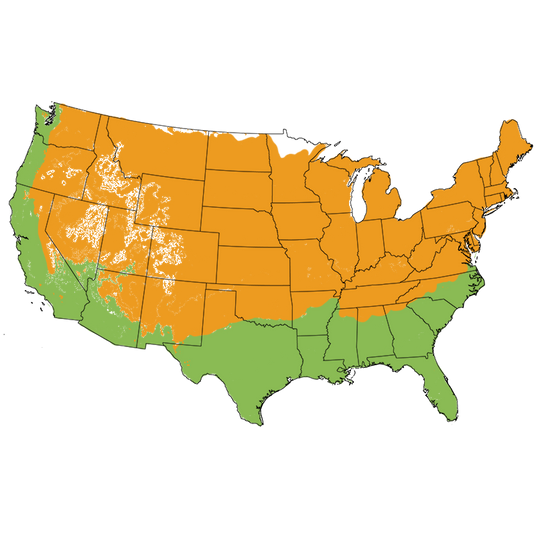
Growing Zones 8-11 (patio 4-11)
Tough as nails with a long history, the lovely varied pink shades of the Oleander (Nerium oleander) is a plant with a past! People love the beautiful Oleander flowers, and they have graced gardens in Asia, Africa and the Mediterranean since ancient times. They were grown in the famed gardens of Pompeii. No wonder it was brought to cultivate in the Galveston, Texas area in 1841!
You can enjoy these incredibly rugged and drought-resistant plants so many ways in your landscape. With their lovely leaves and bright pink flowers, they are truly standouts in any garden. These large, pink flowering shrubs feature long, narrow lance shape leaves that capture the slightest breeze. The dazzling flowers persist from early summer to early fall. In higher humidity, the mildly sweet Apricot fragrance of the Oleander adds another landscape attribute. This pink flowering variety features single flowers which fall cleanly from the shrub.
Oleander are year-round evergreen shrubs that don't need to be pruned or fussed over. You can truly plant and forget them, once they are established. They are evergreens, so the waxy, deep-green leaf color is on the plant year-round. They put on a flower show all summer long with gorgeous trumpet-shaped blooms. Hummingbirds and bees will adore these blooms and swarm around the varying shades of pink!
In the home garden, care must be taken to avoid the highly toxic sap. While kids tend to steer clear of anything "green" like vegetables or Oleander, it's best to educate them early to leave this plant alone. Even though the leaves are extremely bitter and unpalatable, it is not a shrub recommended for use near stock animals. Some people also have a sensitivity to leathery Oleander leaves. Wear gloves to avoid skin irritation while handling.
Planting and Application:
Oleanders have been used by city planners as freeway plantings for many decades. In some areas you can drive for miles experiencing a kaleidoscope of color in the median strip. Why not line your long driveway with these time-tested shrubs? These are perfect accent plants in even the most aggressively warm climates.
They are quick growers to their full height and are perfect for fences, borders and property edges. Use them as a beautiful flowering windbreak at beach properties. Plant them in a staggered double row in a zig-zagging pattern. Mass them on tough, sunny sites, such as slopes. It's far easier and safer to allow them to grow to their full height and spread than trying to mow.
Use Oleander wisely in your landscape. They make a wonderful hedge, a great screen plant as well as a very beautiful accent tree. Up close, the leaves and flowers look dainty, but from a distance, the shrub shows off a rougher texture. These plants make the perfect large backdrop for garden borders. They are big enough to provide a sparkling background for other flowering shrubs in the border, too. Create living walls for special garden rooms or hide the more mundane utility areas of your garden.
Oleander also makes a wonderful container plant and patio accent plant. Although it is not cold hardy, people in colder climates can grow them as summer flowering container plants. In Zones 4 - 7, simply move them to an attached garage with a window in winter to protect them from the cold. Remember to water your containerized Oleander in winter!
They can be trained as a multi or single-trunk tree and make a great featured plant in the landscape. It can create a marvelous focal point in a drought-tolerant, xeriscape garden. Line the perimeter of a large commercial or home property with a great-looking Oleander hedge. For a long, continuous hedge, plant Oleander 5 feet apart (you'll measure from the center of one to the center of the next).
- Fabulous Bright Pink-Tone Summer Flowers
- Rich Broadleaf Evergreen Foliage
- Screening or Specimen in Large Landscapes, Great in Containers
- Historical Plant Used Throughout Asia, Africa & the Mediterranean
- Not Recommended for Use Near Stock Animals
- Teach Children to Leave Oleander Alone
#ProPlantTips for Care:
These rugged garden plants caught national interest, and they found their way from Texas across the entire country. Oleander thrives in Zones 8 - 10 from Southern California with its dry heat, on both coasts, to the high heat and humidity of Florida and the Gulf Coast. They are well known for their ability to tolerate the harshest conditions, including drought, salt spray, reflected light from windows and painted walls, high heat and high humidity. It grows in either acid or alkaline soils.
Oleander is as drought-tolerant as a landscape shrub or tree can be. Water regularly for the first year and less the next year and needs very little supplemental water from then on. In containers, Oleanders require regular watering and must be fed a general-purpose fertilizer at least twice a season. Recommended application rate is once in the late winter and once on the late summer.
The plant is adapted to almost all soils and can even tolerate brief periods of flooding. However, overwatering can lead to yellowing leaves. Best to keep this arid native on the dry side with well-drained soil. When supplemental water is given, water the soil at the roots and keep the leaves dry. Apply a 2-inch layer of compost or arborist mulch under the plant each spring to retain moisture and control weeds.
Oleander Pruning
Oleander stays fresh and flowers with little assistance. However, you can prune it to encourage bushier growth and more flowers, and to reduce the size of the shrub. It blooms on new wood. It's best to Prune them after the summer blooms are finished.
Regularly remove damaged, crisscrossing or dead branches to keep your plants healthy. Be sure to bag and remove pruned branches from the site. The limbs and leaves should not be used as firewood or the limbs to cook with.
Once your plants are 10 years old, start a regular maintenance program of rejuvenation pruning. in spring, cut 1/3 of the oldest trunks off at the ground level in spring and remove them from your property. In a three-year period, you'll have a brand-new shrub without losing valuable height.
- Full Sun
- Any Well-Drained Soil
- Salt-Tolerant & Works on the Coast
- Drought Tolerant Once Established
- "Plant It and Forget It" Tough
- Prune After Flowering in Summer
Nature Hills ships strong field-grown plants that will arrive at your doorstep in fabulous condition, ready to plant in your garden. Order these truly 'tough as nails' but beautiful Oleanders today! You'll love these plants that provide a burst of color in your yard. They'll grow beautifully, even in poor soil and extreme heat. Don't miss your chance - order today at NatureHills.com!






